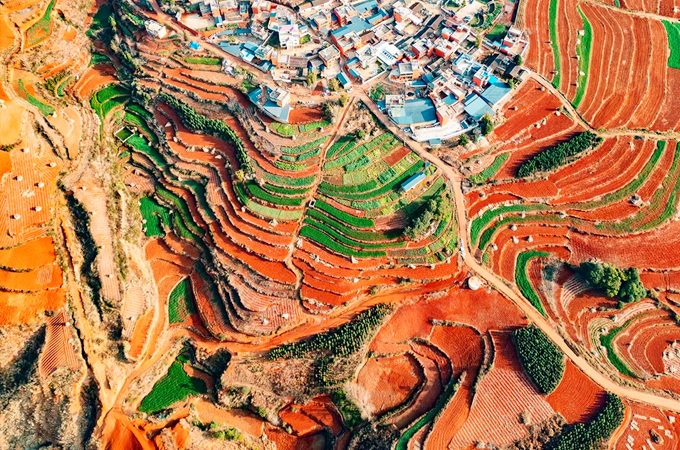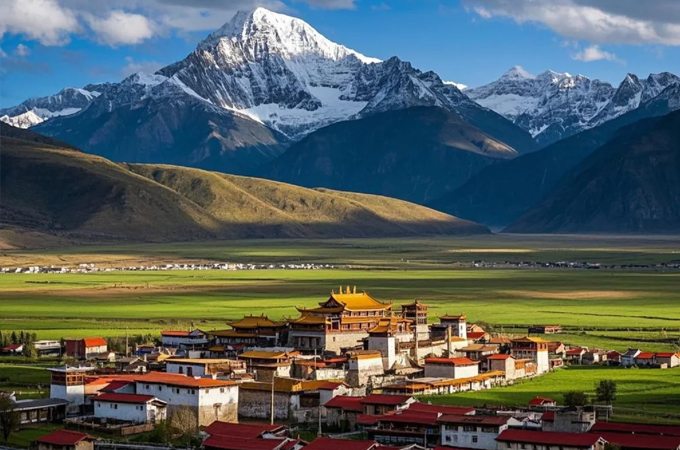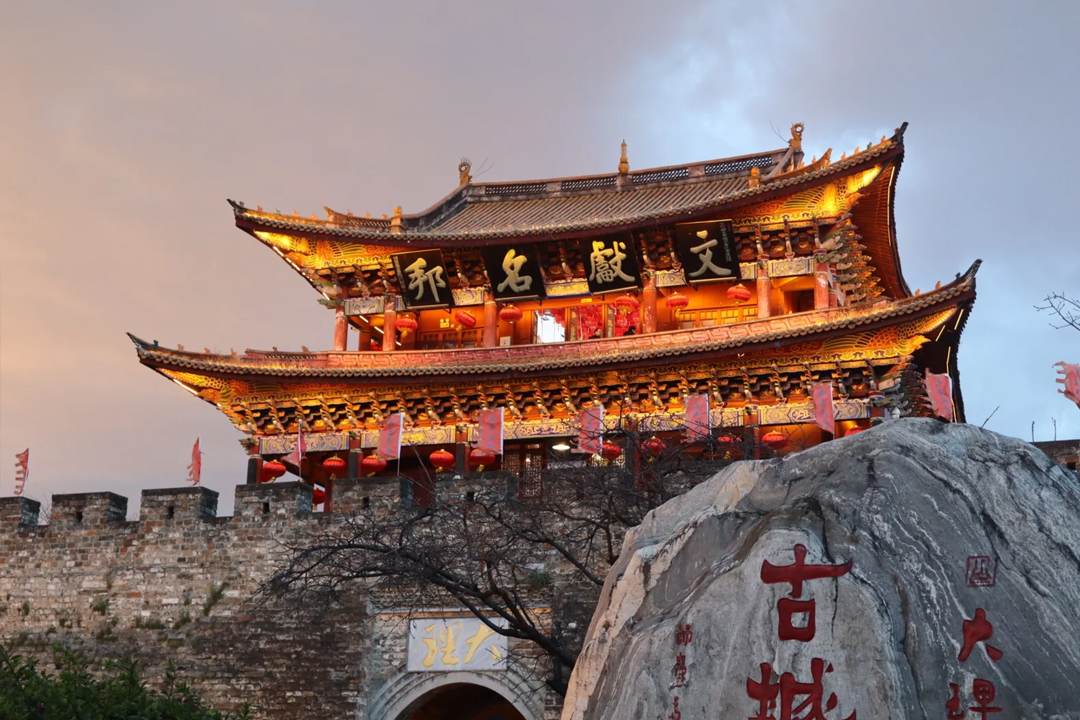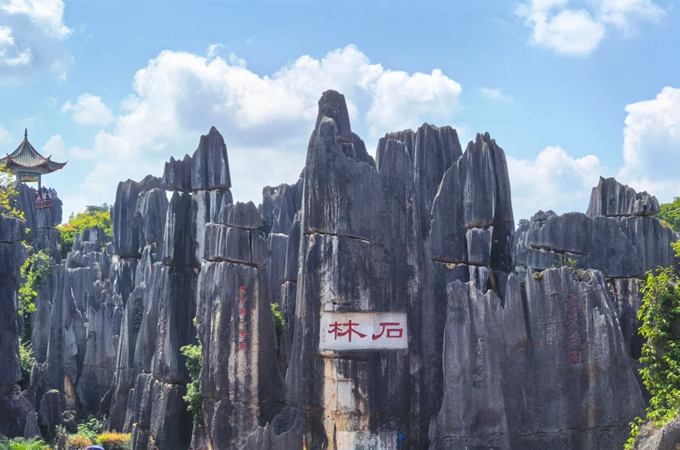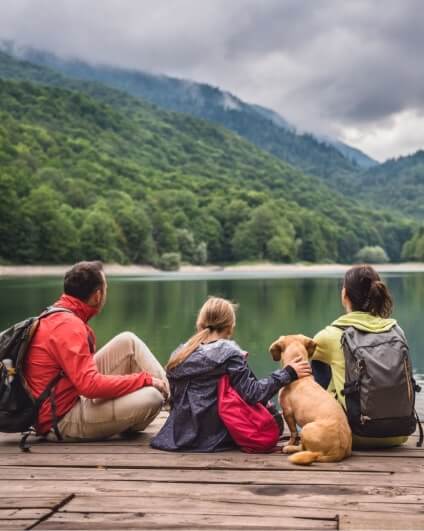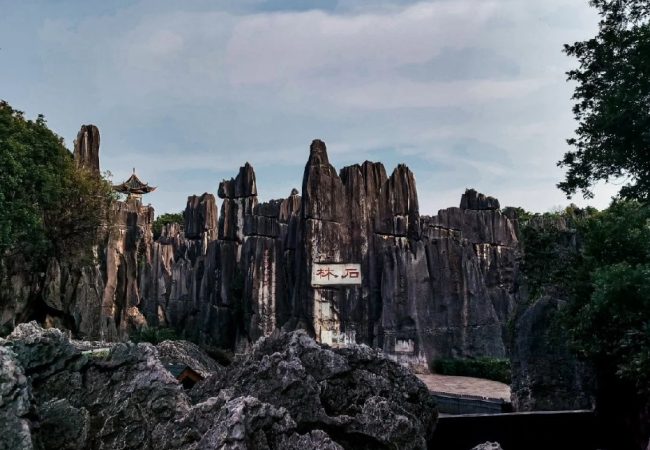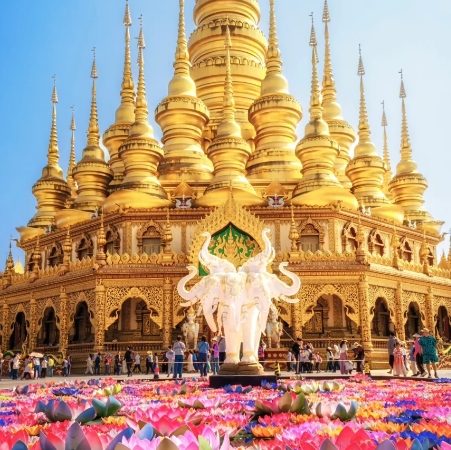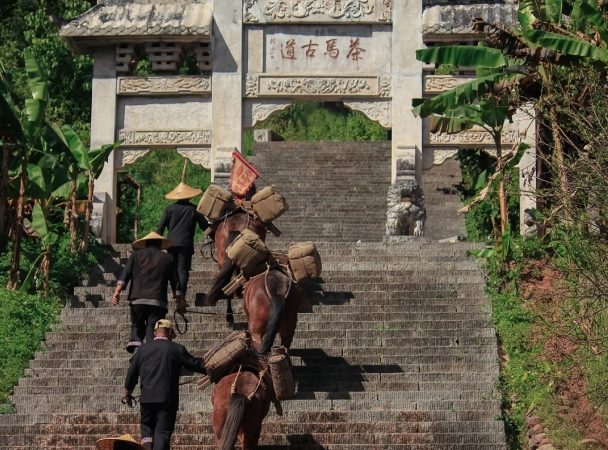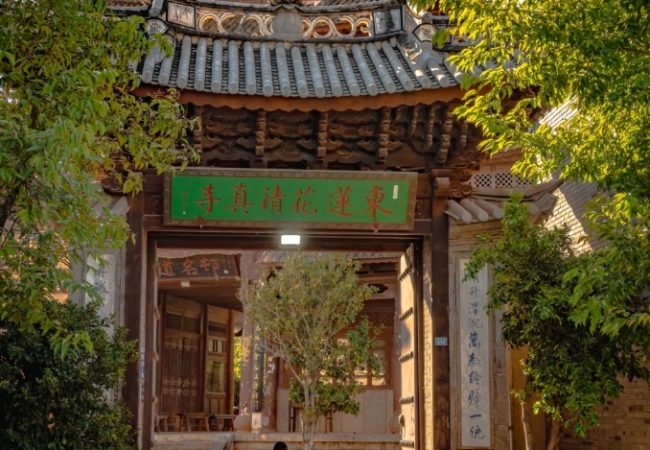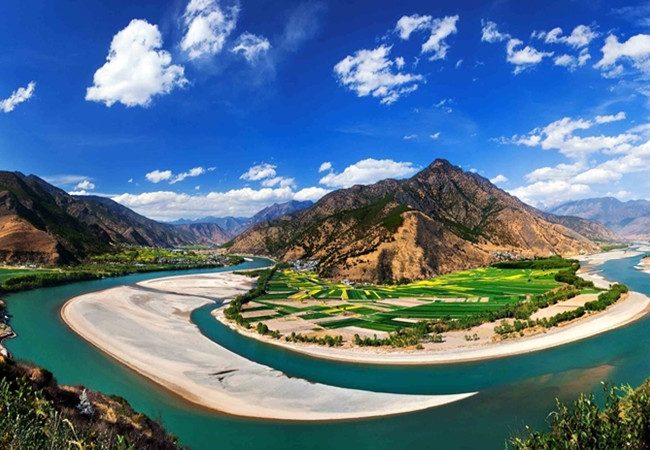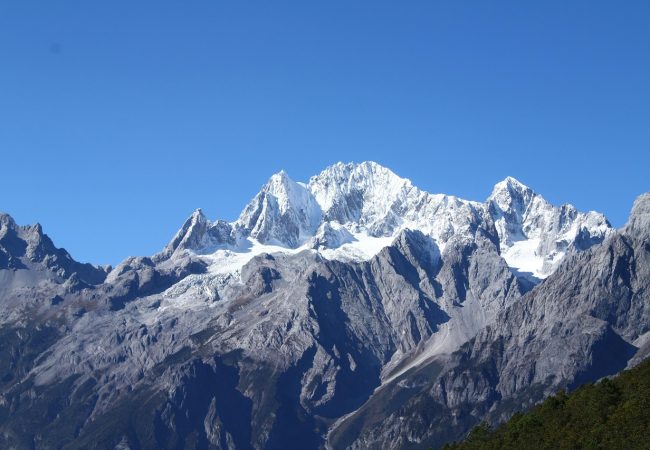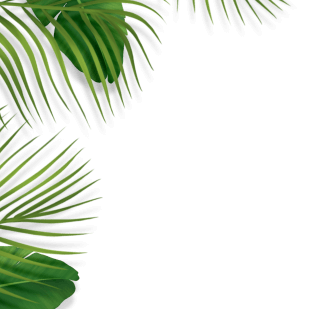
“Xishuangbanna” is derived from the Dai language, where “Xishuang” means “twelve” and “Banna” means “thousand fields,” originally a unit of land measurement and tax collection for the Dai people. It later evolved into an administrative unit. The name “Xishuangbanna” comes from the fact that the 23rd Prince of Jinglong (景陇国) divided his territory into 12 administrative regions, each called a “Banna.” It represents a unique cultural and geographical area with a rich history.
Climate and Weather
Xishuangbanna has a tropical monsoon climate, characterized by year-round warmth and humidity, with no distinct seasons but rather dry and wet seasons.
Dry Season
From November to April, the dry season features strong sunlight, dry air, and less precipitation. The weather is mostly sunny, making it the peak tourist season.
Wet Season
From May to October, the wet season is marked by abundant rainfall, especially during the summer months. The lush tropical rainforest scenery is at its best, with high humidity in the air.
Temperature
The annual average temperature is around 20-25°C. Winters are warm, with the coldest month still above 10°C, and summers are cool, with minimal extreme heat or cold. The temperature difference between day and night is small, ranging from 5-10°C.
Best Time to Visit
November to April
This period offers comfortable temperatures, neither too hot nor too cold, with plenty of sunshine and dry air. It is ideal for outdoor activities such as exploring the tropical rainforest and visiting various attractions. Additionally, this time coincides with the concentrated festivals of ethnic minorities like the Dai, including the Water-Splashing Festival in mid-April, which provides a rich cultural experience.
June to September
Although the rainy season brings more precipitation, it is also when the tropical rainforest scenery is most spectacular. The vegetation is lush, and the air is fresh. Visitors can enjoy a variety of tropical fruits. However, it is important to carry rain gear and be cautious of slippery roads due to rainfall.
Transportation Guide
External Transportation
Aviation
Xishuangbanna Gasa International Airport (西双版纳嘎洒国际机场) is a first-class national port and the second international airport in Yunnan Province. It is also an important trunk airport and medium-sized hub airport in the province. Currently, there are 19 domestic routes to major cities such as Dali (大理), Lijiang (丽江), Shanghai, Zhengzhou, Tianjin, Chengdu, and Chongqing, as well as two international routes to Bangkok.
Railway
Xishuangbanna Station (西双版纳站) is a station on the newly built Yuxi-Mohan Railway. The train journey from Kunming Station/Kunming South to Xishuangbanna takes about three hours. The passenger and cargo transportation on the Xishuangbanna section of the China-Laos Railway is showing a continuous growth trend.
Highway
- Expressways: There are several national and provincial expressway routes, including G8512 Jinghong-Daluo (景洪 — 打洛), G5617 Lincang-Menghai (临沧 — 勐海), G8511 Kunming-Mohan (昆明 — 磨憨), S4112 Mengla Airport Expressway (S4112 勐腊机场高速公路), and S4115 Jinghong-Menglong (景洪 — 勐龙240界碑) highways.
- National and Provincial Roads: The national roads include G213 Keke-Mohan (策克 — 磨憨), G219 Kanas-Dongxing (喀纳斯 — 东兴), and G677 Mengla-Ximeng (勐腊 — 西盟). The provincial roads include S222 Menglun-Mengman (勐仑 — 勐满) and S225 Gasa-Menglong (嘎洒 — 勐龙).
Waterway
Jinghong Port (景洪港) is a first-class national port in China, with international water routes connecting to the commercial ships of Laos, Myanmar, and Thailand.
Internal Transportation
Public Bus
Jinghong City currently has 22 bus routes, including five city bus routes and one tourist bus line (Route 8). The city bus routes cover major streets, attractions, and commercial areas. For example, Route 1 runs from Jingde Road Civil Aviation Intersection to Gasa, Route 2 from Jinghong Port to Gadong, and Route 3 passes through Manting Park and Jinghong Passenger Station.
Taxi
The starting fare for taxis is 7 yuan (3 kilometers), including a 2-yuan fuel surcharge. If crossing the river, the fare is generally 10-12 yuan or higher.
Ride-Hailing
There are 55 ride-hailing companies and 4,244 vehicles in Xishuangbanna Prefecture, offering diverse travel options for local residents and tourists.
Scenic Area Shuttle
Twelve scenic area shuttle routes have been launched. Tickets can be purchased online on the “Xishuangbanna Safe Travel” platform or at offline service points. These shuttles provide convenient access to attractions such as the Xishuangbanna Tropical Botanical Garden (中科院植物园), Wild Elephant Valley (野象谷), and Dai Ethnic Village (傣族园).
Car Rental
Many car rental companies are available in the area, offering various types of vehicles. Renting a car is suitable for family trips or group travel, allowing for flexible itinerary planning and exploration of surrounding areas.
Electric Vehicles
Electric vehicles, including daily rentals and shared bikes, are affordable and suitable for short trips within the city or nearby attractions. They offer flexibility in travel plans, but safety should be prioritized.
Must-Visit Attractions
Xishuangbanna Tropical Botanical Garden (西双版纳热带植物园)

The largest tropical plant repository in China, filled with exotic flowers and plants. Visitors can stroll along rainforest trails, visit the Celebrity Tree Garden, and enjoy educational activities.
Wild Elephant Valley (野象谷)

The only habitat of Asian elephants in China. Visitors can take an aerial tram to overlook the dense rainforest, watch elephant interaction performances, and even stay overnight in tree houses for a close-up experience of nature.
Primitive Forest Park (原始森林公园)
This park features well-preserved tropical rainforest valleys, peacock culture, Aini ethnic culture, and a comprehensive folk culture. Visitors can enjoy unique rainforest landscapes such as buttress roots, strangler figs, cauliflory, and lianas.
Manting Imperial Garden (曼听御花园)

Once the private garden of the Dai king, it features ancient ironwood forests and rich vegetation. The park includes a national culture square and a vine plant area, with evening performances and bonfire parties.
Starlight Night Market (星光夜市)
Located in the heart of Gaxian Xishuangjing (告庄西双景), this is one of the largest night markets in Southeast Asia. Visitors can enjoy local snacks, shop for ethnic handicrafts, and experience open-air music and dance performances.
Food Recommendations
Dai Cuisine
Dai cuisine offers a variety of unique flavors, including Dai-style fermented meat, grilled dried beef, ice (pea) bean jelly, fried grasshoppers, raw mango, bamboo basket banquets, grilled food, pineapple (purple/millet) rice, pounded chicken feet, bamboo rice, Dai-style barbecue, lemongrass grilled fish, fried bee larvae, num mi (a type of rice dish), bubble milk tea, pebble freshwater fish soup, sour bamboo shoot fish, pickled vegetables, grilled chicken, grilled fish, dipping tofu, and cold shrimp, among others.
Hotpot
“Shu Daxia” hotpot is highly recommended, offering a variety of soup bases and a wide selection of ingredients to suit different tastes.
Accommodation Recommendations
Gaxian Xishuangjing (告庄西双景)
This area is conveniently located, with a variety of guesthouses and hostels. It is close to the night market and offers a vibrant nightlife experience.
Jinghong City Center (景洪市区)
The city center is home to many established hotels with complete facilities, suitable for budget-conscious travelers.
Wanda Resort Area (万达度假区)
This area features elegant surroundings and high-end hotels, with facilities such as children’s amusement parks. However, transportation might be less convenient compared to other areas.
Important Notes
Climate and Clothing
- Appropriate Clothing: Xishuangbanna has a tropical monsoon climate with an annual average temperature of around 21°C. There is no need to bring heavy cotton clothing. Instead, pack light and breathable summer clothes. However, there may be some temperature differences between day and night, so a light jacket is recommended.
- Sun Protection: The area has strong sunlight and high UV radiation. Bring high SPF sunscreen, sun hats, sunglasses, and umbrellas to avoid sunburn.
Customs and Religion
- Respect Ethnic Customs: Xishuangbanna is home to several ethnic minorities, including the Dai and Hani, each with unique customs. For example, when entering a Dai bamboo house, remember to remove your shoes and avoid.
If you wish to learn more about the itinerary, please check our Xishuangbanna tour.

